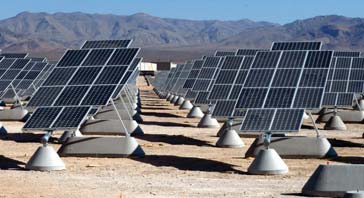Clean India, Clean Ganga, Smart Cities, Digital India and financial inclusion through bank accounts for the poor are expected to open up big opportunities for businesses in this space. The positive spiral will take several adjacent sectors along creating huge value bottom up. The upcoming budget is expected to set the direction and financial commitment by the government.
The other big ticket reforms that could have major impact are related to renewable energy. One of the provisions in the Electricity Amendment Bill introduced in the Lok Sabha last December is to make thermal power plants compulsorily generate energy from renewable sources. The bill also seeks to raise fi nes for non-compliance.
The expected Renewable Energy Bill would overhaul the transmission and distribution systems as well as encourage indigenous manufacturing of renewable energy equipment with the provision of 100% tax breaks in order to ensure that 15% of the county’s power requirement is addressed through renewable energy sources by 2020.
Railways, Refineries and Power distributors to Come Under PAT
The first round of the PAT (Perform- Achieve-Trade) Scheme covering the aluminum, cement, chlor-alkali, fertilizer, iron & steel, paper & pulp, thermal power and textiles sectors comes to an end in March 2015. In the second phase the PAT scheme will include three more heavily polluting industries – railways, oil refi neries and power distributors.
Overall, all the plants in the six sectors were to achieve a 4.05 per cent reduction in the average energy consumption by 2014-15. This was estimated to reduce annual energy consumption by 6.69 million tones-of-oil-equivalents (mtoe) at the end of Phase 1. The BEE (Bureau of Energy Effi ciency) reports show that in 2013-2014 annual energy savings worth 4.12 mtoe were already achieved and 217 of the 478 plants (45%) have already met their targets and another 60 plants are well on their way to do so. BEE expects that there will be overall compliance with the scheme, with some amount of trading of the Energy Savings Certifi cates to meet targets.
Reintroduction of Subsidy for Electric Vehicles
 It is expected that a subsidy scheme could be reintroduced to revive the lackluster EV market in India. The National Mission for Electric Mobility 2020 was launched in January, 2013 for fostering adoption and manufacture of electrical vehicles (including hybrid vehicles) and aims to sell 6-7 million units of EVs by 2020. When the subsidy was cancelled, it saw a sharp decline in EVs sales in the country, but its re-introduction is expected to boost the market again. Companies like Mahindra & Mahindra, Terra Motors and Tesla are already gearing up to meet the increased demand of EVs once the subsidy scheme comes into place.
It is expected that a subsidy scheme could be reintroduced to revive the lackluster EV market in India. The National Mission for Electric Mobility 2020 was launched in January, 2013 for fostering adoption and manufacture of electrical vehicles (including hybrid vehicles) and aims to sell 6-7 million units of EVs by 2020. When the subsidy was cancelled, it saw a sharp decline in EVs sales in the country, but its re-introduction is expected to boost the market again. Companies like Mahindra & Mahindra, Terra Motors and Tesla are already gearing up to meet the increased demand of EVs once the subsidy scheme comes into place.










